How to grow grapes from cuttings?

Many gardeners, in order to grow the desired grape variety, resort to propagation by cuttings. In this article, you will learn how to properly grow grapes from cuttings, and you can also find out everything about their rooting in spring and autumn at home.
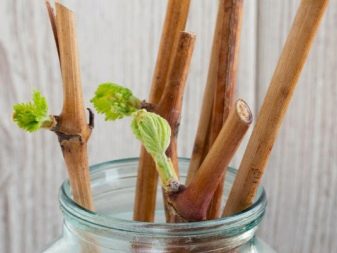

Pros and cons of growing
It is not so difficult to grow grapes from cuttings, but the process has its own specifics. Reproduction in this way has a number of advantages and disadvantages. Let's start with the first ones.
- Confidence... You do not doubt the health of the plant, choosing this or that site on it yourself. When buying cuttings in the store, you can never say for sure whether they are healthy or not. Moreover, the shanks are able to fully maintain their ancestry.
- Viability... By rooting cuttings, you can acquire a strong seedling at the very beginning of summer, but when cultivated in open ground, such a result can be obtained only in the first months of autumn. This happens because when rooting, the cutting (it is also called the shank) passes a two-year cycle in one season, so you can expect fruiting from it a year earlier.
- Volumes... You can multiply the bush for as many plants as you need with your own hands, absolutely free of charge. The largest number of mature vines ideal for propagation can be obtained after pruning in the fall.
- Independence... Growing grapes yourself, you do not depend on the manufacturer and the time frame for the supply of cuttings from his side.
- Convenience... Saplings are not capricious in terms of growing conditions. It is enough to follow all the rules.
The disadvantages include the following.
- Time... You need to be patient enough as the process takes a long time.
- Vaccinations... Another important condition for the cuttings to take root well in the future.
- Space... Not to say that they take up a lot of it, however, if you are growing grapes in large quantities, you should set aside a suitable place in advance.

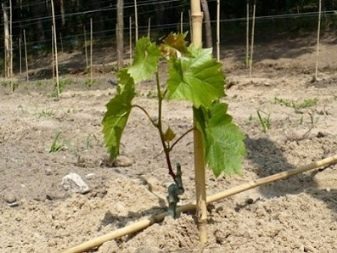
How to prepare and save cuttings?
Cuttings are prepared and stored starting in the fall. The success of the future harvest depends on the quality of the cuttings selected and the care carried out. Experienced gardeners recommend taking lignified shoots from large, strong and well-developed vines. Having given roots after two to four weeks, the plant becomes more adaptable. Such a plant avoids the stage of intermediate planting (the cuttings are planted immediately in open ground), which reduces the risk of root injury.
The preparation of the shanks itself consists of several stages.
- Slicing... The material should be cut from the vine mainly in October, before the first frost. At this time, the plant is resting, therefore, cuttings taken in the fall tolerate separation from the main plant more calmly and have better viability under winter storage conditions. You need to cut at a slight angle, ideally with a knife.
- Storage... The harvested shafts are distributed according to grades, tied with a rope, attaching a label with the name. Seedlings are usually stored in a cellar or basement, placed in wet sand or a refrigerator, previously wrapped in a bag or rag.
- Blank... Before planting the cuttings, it is necessary to carry out certain manipulations to achieve a full-fledged state, awakened from "hibernation".The procedure is simple and will be described below.
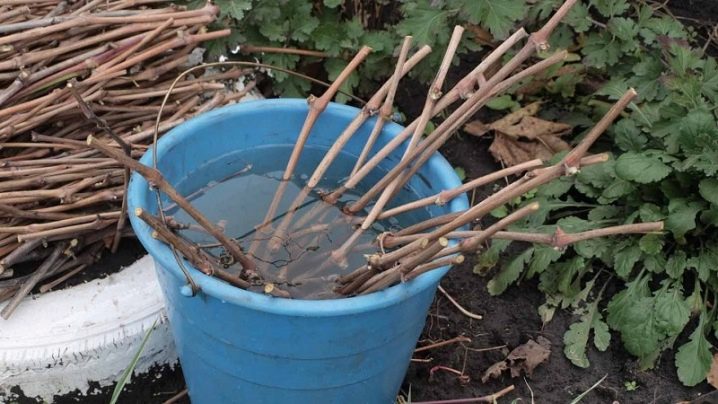
Preparation
February is coming, spring is approaching, gardeners are beginning to prepare material for the approaching moment of planting. Shanks that have wintered in a cold space need to be rooted. Let's analyze the process step by step.
- Cuttings are removed from storage and inspected for rot, black spots, and disease. The ends are cut with a secateurs by one centimeter.
- Then the cuttings stand in melt or spring water for 1-2 days. It needs to be changed periodically. If neither one nor the other is not, water is taken from the tap, but it needs to settle for at least a day (for the release of chlorine and other components).
- If necessary (for a good harvest), they are treated with growth stimulants. Popular are "Epin", "Kornevin", sodium humate.
Some gardeners add a little honey to the water.
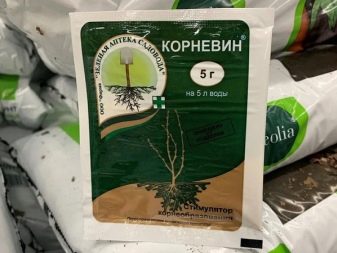
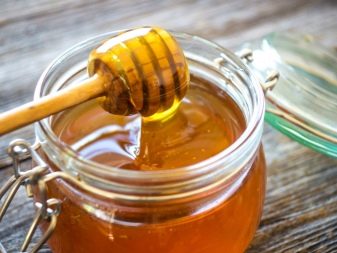
Rooting methods
Sprouting and rooting methods in the spring at home are a bit similar to each other. Let's consider several ways of how to root future grapes easily and correctly.
In water
One of the most common and at the same time simple ways, suitable for beginners, is cuttings in water... More precisely, in a jar or bottle of water. A container with a volume of 1 liter is taken, water at room temperature is poured into it (you can warm it up a little, there will be nothing wrong with that). It is enough that the height of the liquid reaches 5 cm from the bottom. Next, put a bunch of cuttings. The water needs to be changed from time to time.
The jar is placed on the windowsill, as water evaporates from it, the liquid is added to the previous level. The first roots appear in about a month. Disembarkation occurs when they reach a length of at least three millimeters.
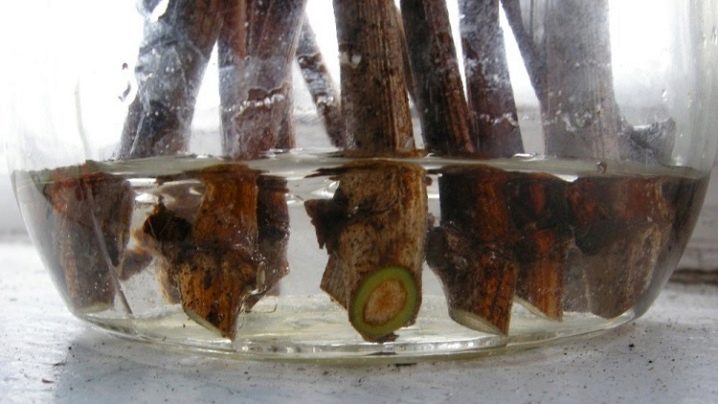
In the filler
The formation of roots can also occur hidden from us: in the ground or other fillers. In this case, planting of shanks is often carried out in plastic bottles or cups. The following options are considered good substrates for germination.
- Peat tablets... Sold in specialized stores, they assume constant moisture after swelling in water and planting cuttings.
- Coniferous sawdust. They are poured into a container up to 3-4 cm and moistened. Disembarkation of the shanks soaked in water in advance occurs with the sprinkling of the top layer with drier sawdust. The bottom level should be damp.
- Fertile soil... There should be enough humus and sand in the ground. Ideal if it is a little loose.
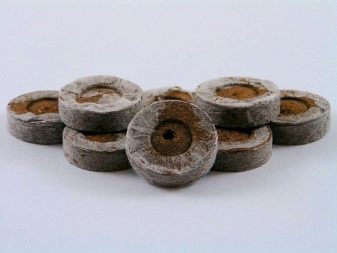
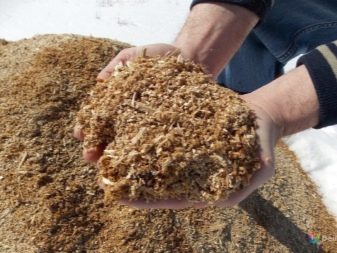
On the wardrobe
One of the convenient methods for placing cuttings at home is Natalia Puzenko's germination technique.. Its method is recognized as effective: excellent seedlings are achieved with minimal cost and effort.
The fabric or any linen material is soaked in water and wrung out (you can rinse it beforehand). Next, the canvas needs to be spread on the table. The shawls are wrapped in fabric like a diaper. The roll is placed in a plastic bag and left for three weeks. During this time, roots are formed.
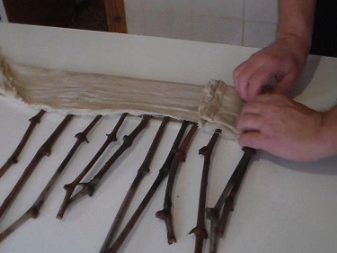
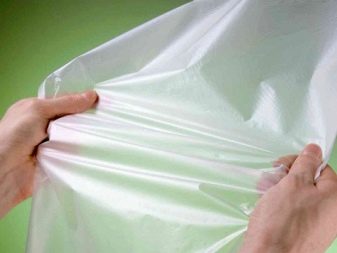
Growing
All preparations for rooting, as well as processing, are carried out in the winter months. Pre-disembarkation takes place in late February or early March. Before planting, cuttings with newly formed roots are grown. Strengthening is necessary so that in the summer the planting material has a high probability of "waking up". The process usually takes two to three weeks. Plants, after the formation of 2-3 mm white roots on them, are placed in an elongated container filled with light soil. Sometimes there are tips for planting in boxes or pots, but we will discuss simpler and less costly options.
If you are using a bottle, you must:
- cut off the top of the bottle with a knife;
- make holes in the bottom area;
- pour drainage first, you can expand clay, then loose soil;
- stick the cuttings obliquely;
- make a polyethylene cap on top.
Periodically, the plants are ventilated, the soil is moistened.Watering is necessary three times a week, and after the formation of good long roots, watering is reduced to two. Rooting takes 3, sometimes 4 weeks. If you are planting in cups, the procedure is as follows.
- Holes are also made at the bottom, the cups are placed on a tray or similar structure and filled with earth. (can be mixed with turf, sawdust and fertilizers like chopped foliage or humus).
- Saplings are inserted, as in the previous version, obliquely.
- To prevent rapid evaporation of moisture the shanks can be covered with a plastic bag.
- Watering is carried out no more than three times a week, but only after the sun leaves the balcony or windowsill.
- After the appearance of the first 4-5 leaves, watering is reduced to two times in seven days... Further, the shanks are planted in another container or in already prepared schools.
Thus, the shanks become small vegetative seedlings, and the first leaves appear from the green buds. The process takes 3-5 weeks. Disembarkation can be done in early spring.
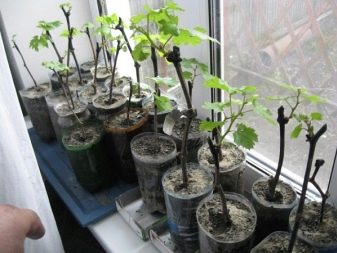
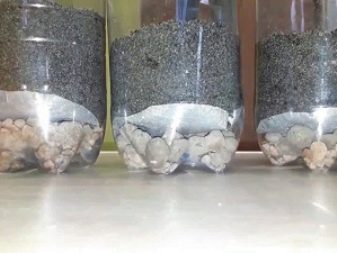
Landing nuances
Being in a state without roots or with them, during the period of harvesting or rooting, plants require certain conditions. By remembering to follow the instructions, you can masterfully grow good seedlings and plant them correctly. The grapes require a minimum of care. Therefore, further recommendations should be followed in moderation.
- The plant, like all its southern relatives, belongs to the thermophilic... Gardeners point out that the most suitable places are the windowsill and the radiator.
- The plant is not placed close to the glass: cold air currents inhibit development processes and make them unbalanced.
- Watering should be moderate. This is almost the most important rule. It is not always possible to guess exactly how much water a plant needs at any given stage. The pallet is extremely convenient in such a situation: the water poured into it is taken by the plant in such quantities as it needs.
- For watering the roots (especially during the rooting period), it is recommended to use melt or spring water. It is important that she is not cold.
- In the process of planting by the rooting type, experienced gardeners feed the seedlings with fertilizer dissolved in water. The best options are "Master", "Kemira". For one teaspoon of the product, take 2 liters of water. The first time feeding is carried out 2 weeks after rooting, the next - with an interval of two weeks.
- Loosening... The process contributes to a good saturation of the earth with oxygen, normal development and growth of the root system. This is the second most important rule after watering.
- In the case of planting in sawdust (rooting), it is necessary to retain moisture... For this, mulching will help you well.
- With regard to fertilization: grapes are especially in need of fertilizing at the stage of root formation. The vine absorbs superphosphate well. If you add it to the cuttings before the root formation phase, then only in dissolved form. Mineral fertilizers containing nitrogen, phosphorus or potassium are also suitable. Each type is taken on average no more than two grams and dissolved in five liters of water. The procedure is carried out every half a month.
Planting cuttings in open ground is carried out in the spring, when return frosts will definitely go away. The site is sprinkled with urea and abundantly irrigated. After a couple of hours, seedlings are planted at a distance of one and a half meters from each other.

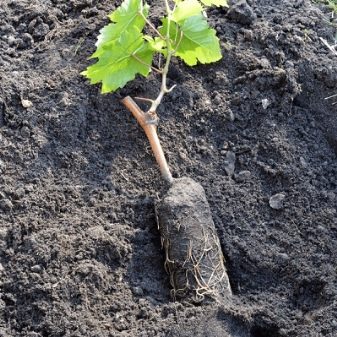













The comment was sent successfully.